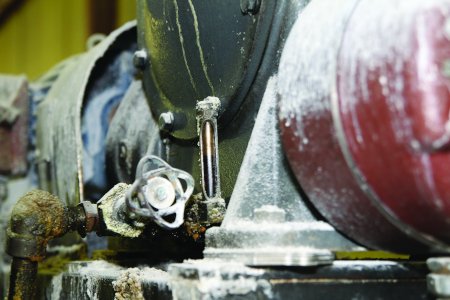Lube-Tips
 Inspect Your Oil Level Gauges
Inspect Your Oil Level Gauges
Routinely inspect the vent hole in column-type vented level gauges. In dirty environments, the vent hole can become easily plugged, causing an airlock in the gauge headspace. This will result in a false oil level (higher than reality) in the gauge. Many prefer dual-port gauges instead (unvented).
Lab Reports Require Quick Action
Unless you have special arrangements, most laboratories retain your oil sample for only a short period of time. Seven to 14 days is typical. When you get back your reports and have a questionable result or want to have additional testing performed, call the lab immediately to avoid the risk of your sample being discarded.
 Getting More from Your Reservoir
Getting More from Your Reservoir
A properly constructed reservoir is more than just a tank to hold the oil until the pump demands fluid. Whenever practical, it should also be capable of dissipating heat from the oil, separating air from the oil and settling out contamination in the oil. Never mix lubricants.
Reasons for Increased Viscosity
Assuming that no water is emulsified in the system, some reasons for an increase in viscosity of a circulating oil might include: the oil may have oxidized, pressure could have increased, temperature might have decreased, possible contamination with a higher viscosity fluid, evaporative losses of light oil fractions from high temperatures, glycol contamination and soot contamination.
Did You Know?
Additional tips can be found in our Lube-Tips email newsletter. To receive the Lube-Tips newsletter, subscribe now at machinerylubricationindia.com
Have Some Tips? If you have a tip to share, email it to admin@machinerylubricationindia.com
